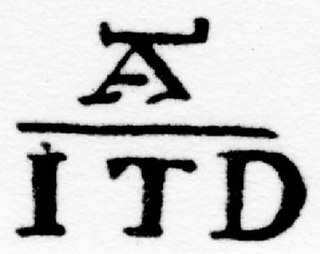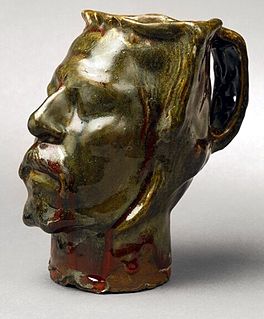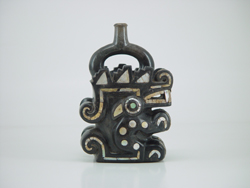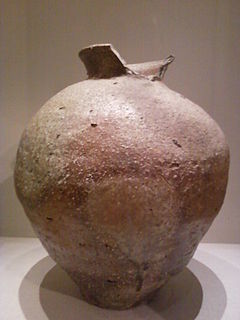 W
WThe Bocchoris vase is a ceramic container dating from ancient Egypt. It was found in 1895 in a tomb at Tarquinia, and is now in the National Museum at Tarquinia. The vessel, often also labelled as situla and made of Egyptian faience, bears an inscription with the names of the 24th Dynasty pharaoh Wahkare Bakenrenef who ruled about 720 to 715 BC. It shows the king between the Egyptian goddess Neith and the god Horus in the middle register, on one side and on the other between Horus and Thoth. In the lower register are shown Kushite prisoners between monkeys eating dates from palm trees, a depiction which was considered by Egyptologist Toby Wilkinson as racial propaganda. The vessel is an important evidence for long distance trade in the 9th and 8th century BC. It is furthermore of some importance for dating earlier phases of Etruscan culture in Italy. Because of the good preservation of the vessel, it has been argued that it came very shortly after it was made into the Etruscan tomb.
 W
WThe Flower-holder (Tulpenvaas) is one of a matching pair of tulip vases dated to ca. 1690 and currently in the collection of Museum Het Prinsenhof.
 W
WThe Frog Service or Green Frog Service is a large dinner and dessert service made by the English pottery company Wedgwood for Empress Catherine the Great of Russia, and completed in 1774. The service had fifty settings, and 944 pieces were ordered, 680 for the dinner service and 264 for the dessert. At Catherine's request the hand-painted decoration showed British scenes, copied from prints, with a total of 1,222 views. In addition each piece had a green frog within a shield, a reference to the name of the palace it was intended for.
 W
WThe Hüseyindede vases are Early Hittite vases decorated with reliefs, which were found in excavations at Hüseyindede Tepe near Yörüklü in the Turkish province of Çorum. There are fragments of four vases in total. Two of them were nearly complete and were able to be restored. The vases, dated to approximately 1650 BCE, are on display in the Çorum Archaeological Museum.
 W
WJug in the form of a Head, Self-portrait was produced in glazed stoneware early in 1889 by the French Post-Impressionist artist Paul Gauguin. This self-portrayal is especially stark and brutal, and was created in the aftermath of two traumatic events in the artist's life. In December 1888 Gauguin was visiting Vincent van Gogh in Arles when Van Gogh hacked off his left ear before leaving it at a brothel frequented by them both. A few days later in Paris, Gauguin witnessed the beheading of the notorious murderer Prado. Gauguin shows his severed head, dripping with rivulets of blood, his ear cut off, his eyes closed as if in denial.
 W
WThe Moche Crawling Feline is a specific stirrup spout vessel dating from 100—800 CE. This Moche ceramic effigy is currently in the collection of Larco Museum, in Lima, Peru. It comes from the North Coast of Peru. It represents a zoomorphic character: a lunar dog, or a crawling feline.
 W
WThe Portland Vase is a Roman cameo glass vase, which is dated to between AD 1 and AD 25, though low BC dates have some scholarly support. It is the best known piece of Roman cameo glass and has served as an inspiration to many glass and porcelain makers from about the beginning of the 18th century onwards. It is first recorded in Rome in 1600–1601, and since 1810 has been in the British Museum in London. It was bought by the museum in 1945 and is normally on display in Room 70.
 W
WThe shigaraki ware storage jar is part of the Japanese collection of the Indianapolis Museum of Art, which is in Indianapolis, Indiana. Created in about 1550, during the Muromachi period, it was at some point broken, which would severely limit its utility. However, it was carefully preserved through the centuries as an art object.
 W
WThe Standing Youth is a terracotta Tanagra figurine in the Staatliche Antikensammlungen in Munich with the inventory numbery SL 162, which was formerly part the collection of James Loeb. The red-brown clay statuette measures 30.7 cm high and was created around 325–300 BC in Boeotia.
 W
W"William", also known as "William the Hippo", is an Egyptian faience hippopotamus statuette from the Middle Kingdom, now in the collection of the Metropolitan Museum of Art in New York City, where it serves as an informal mascot of the museum. Found in a shaft associated with the Upper Egyptian tomb chapel of "The Steward, Senbi", in what is now Meir, William dates from c. 1961 BC – c. 1878 BC, during the reigns of Senusret I and Senusret II. This 20 cm figurine in Egyptian faience, a clay-less material, has become popular not only for his endearing appearance, but also because his defining characteristics illustrate many of the most salient facets of craft production in ancient Egypt during this time.